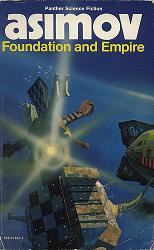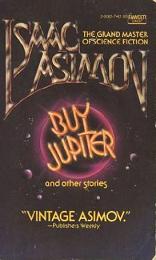
Earth is Room Enough
Isaac Asimov
208 pages
published in 1957
As the backcover blurb has it, “ANYTHING CAN HAPPEN and probably will RIGHT HERE ON EARTH” — which is why Earth is Room Enough for Asimov to set his stories on. This, with another Asimov collection, Buy Jupiter, is one of the books that made me into a science fiction reader and fan. It’s not so much that this is an outstanding collection — a good few of the stories here are amusing at best — but that Asimov is at any rate such an easy and pleasant writer to meet when you’re young. A clever ten year old can follow his stories but since they were originally written for adults, there’s no talking down here. Asimov might not be the best writer now to introduce you to science fiction, but he was for me.
Earth is Room Enough, originally published in 1957 and which stayed in print for at least twenty years is is a collection of stories written between 1951 and 1957 and somewhat of a grab bag, jokes and shaggy dog stories intermixed with more serious ones. As said, all stories were set on Earth and deliberately picked by Asimove for the collection, to prove he could do more than write galactic space opera. Mind, he cheats a bit by including two pieces of comic verse… It doesn’t make for a first rate collection, but it certainly wasn’t a chore reading this either.



